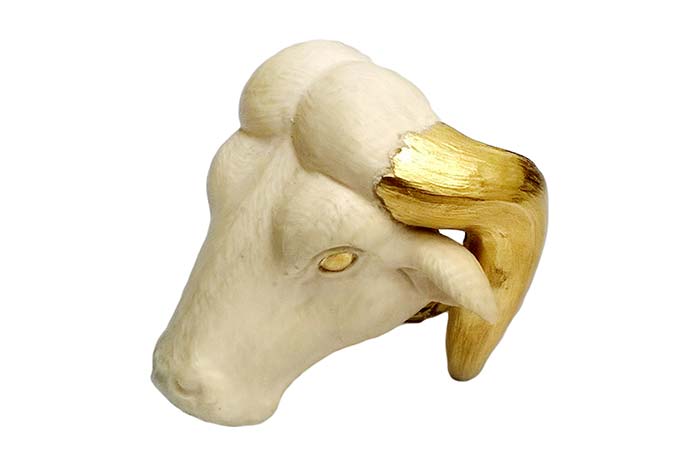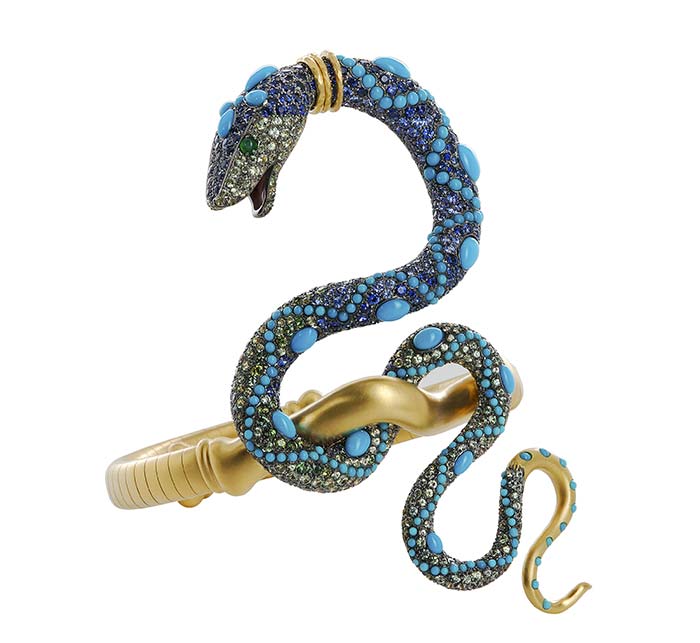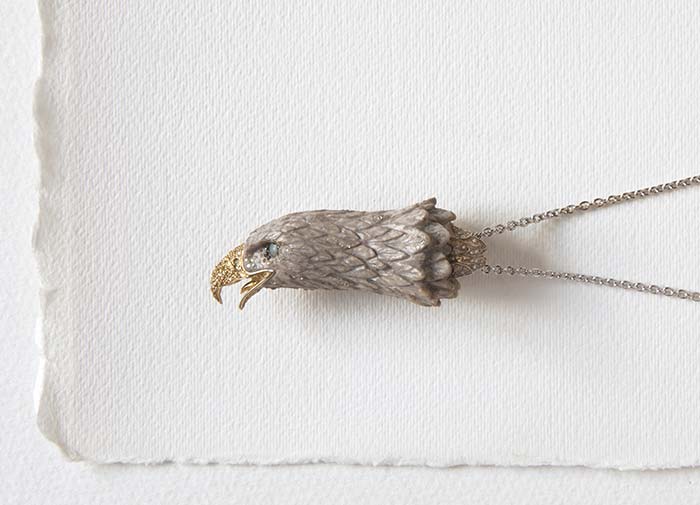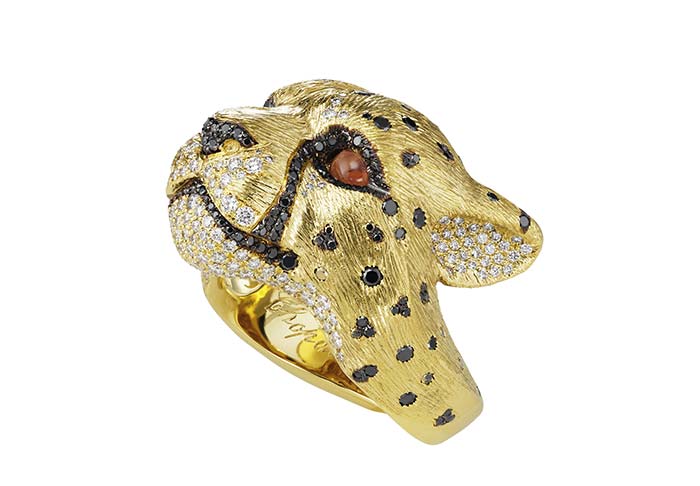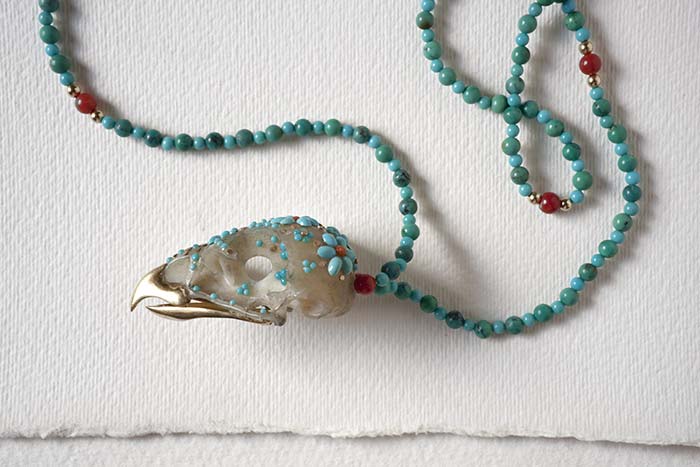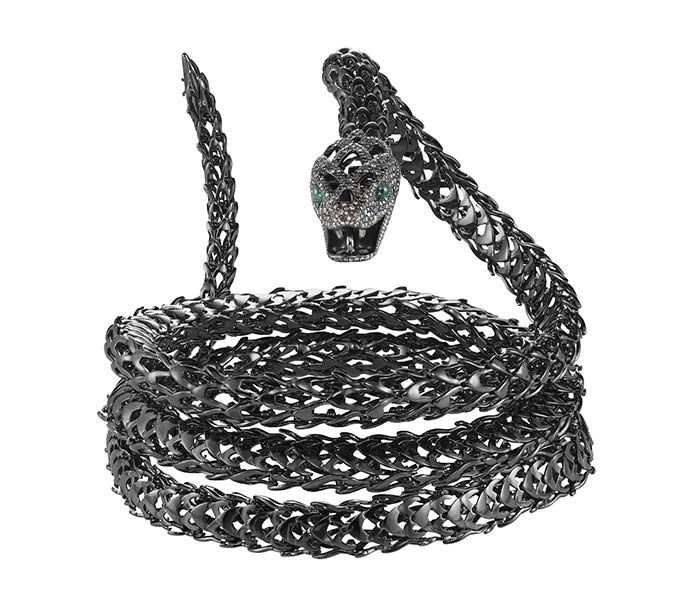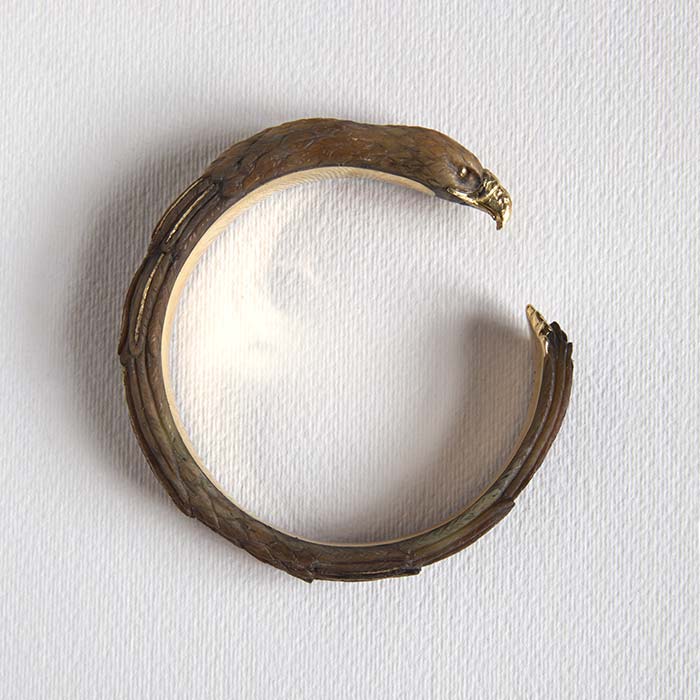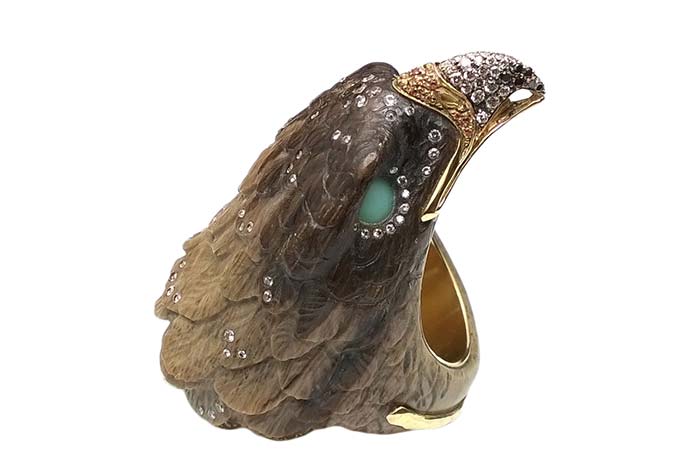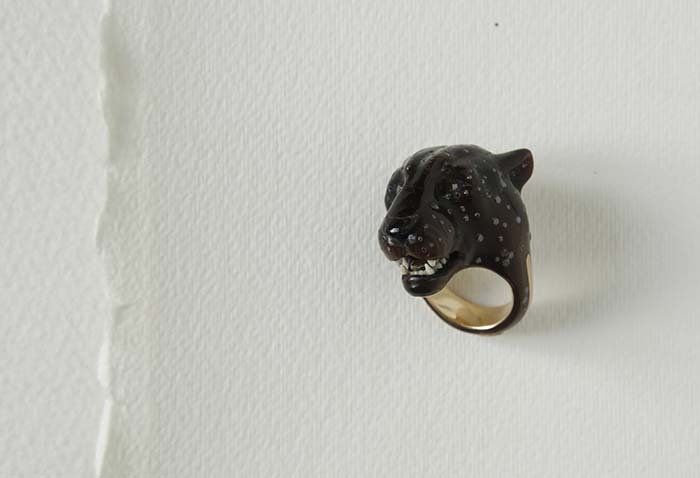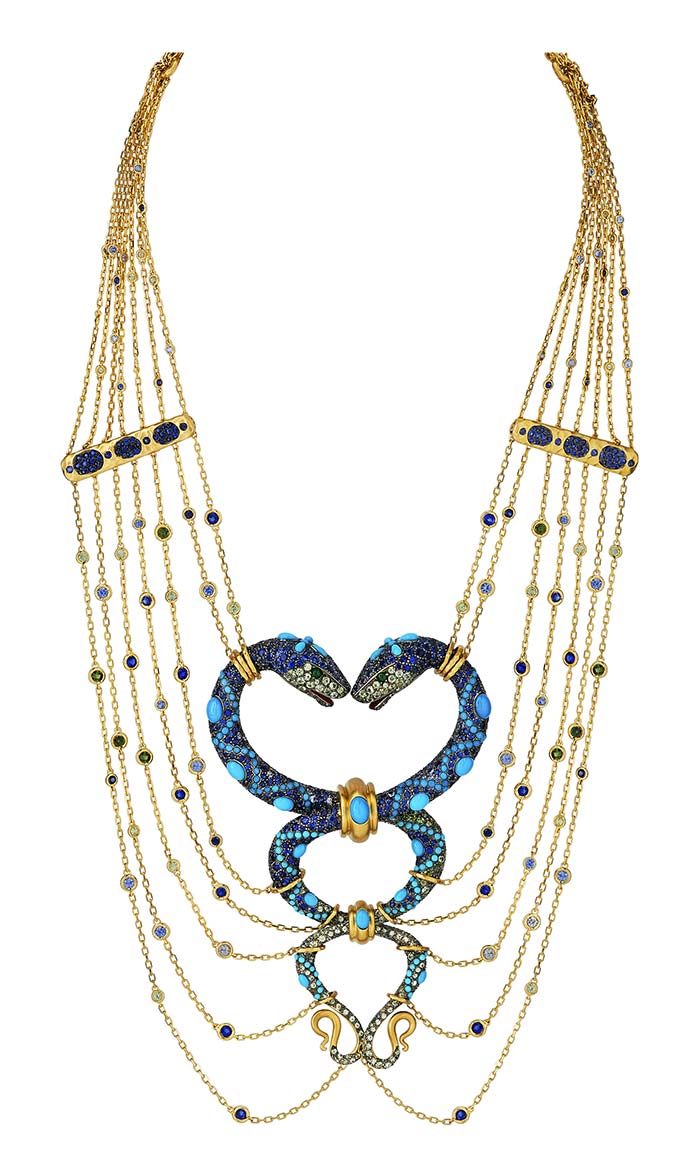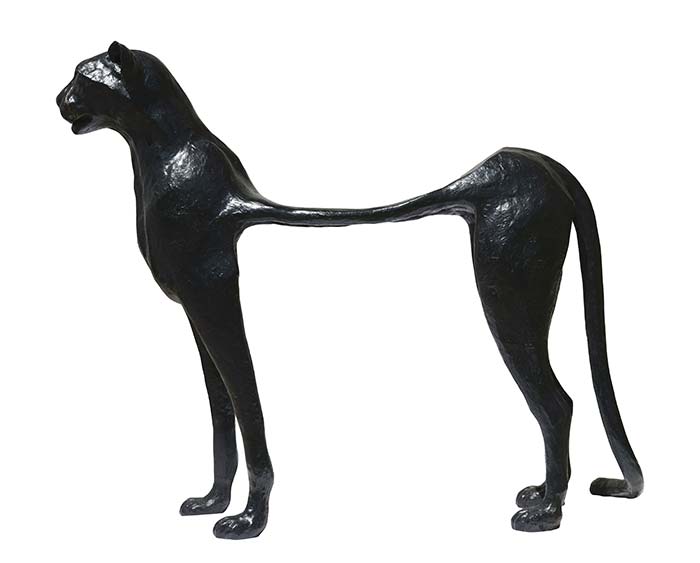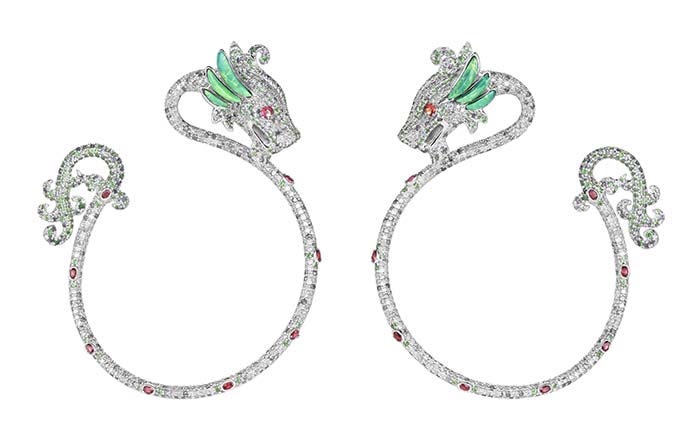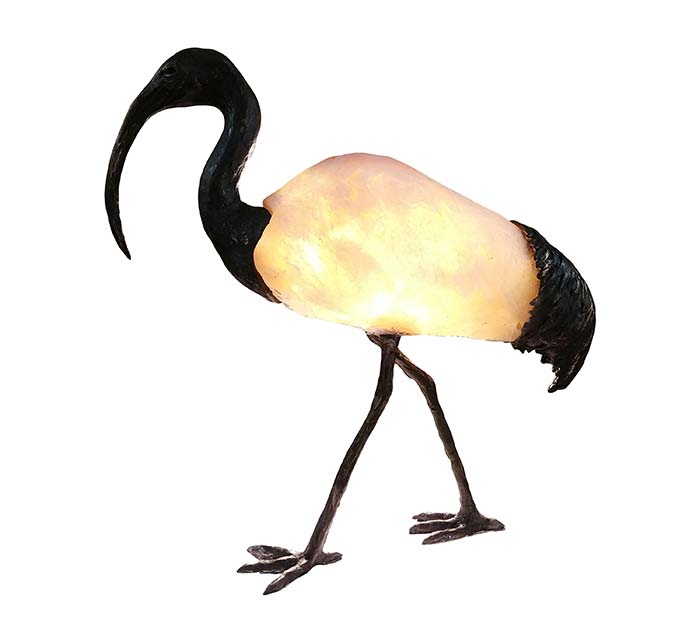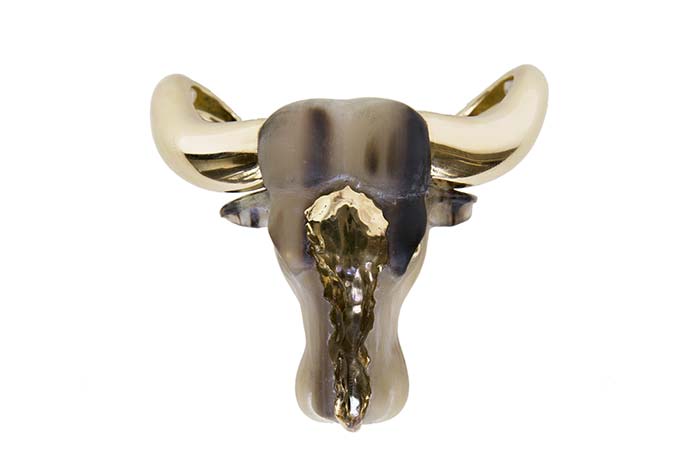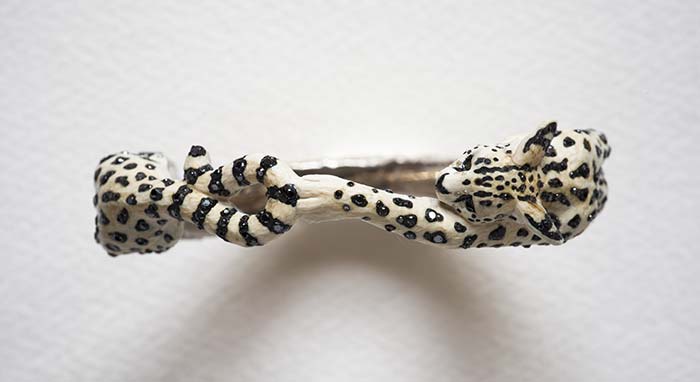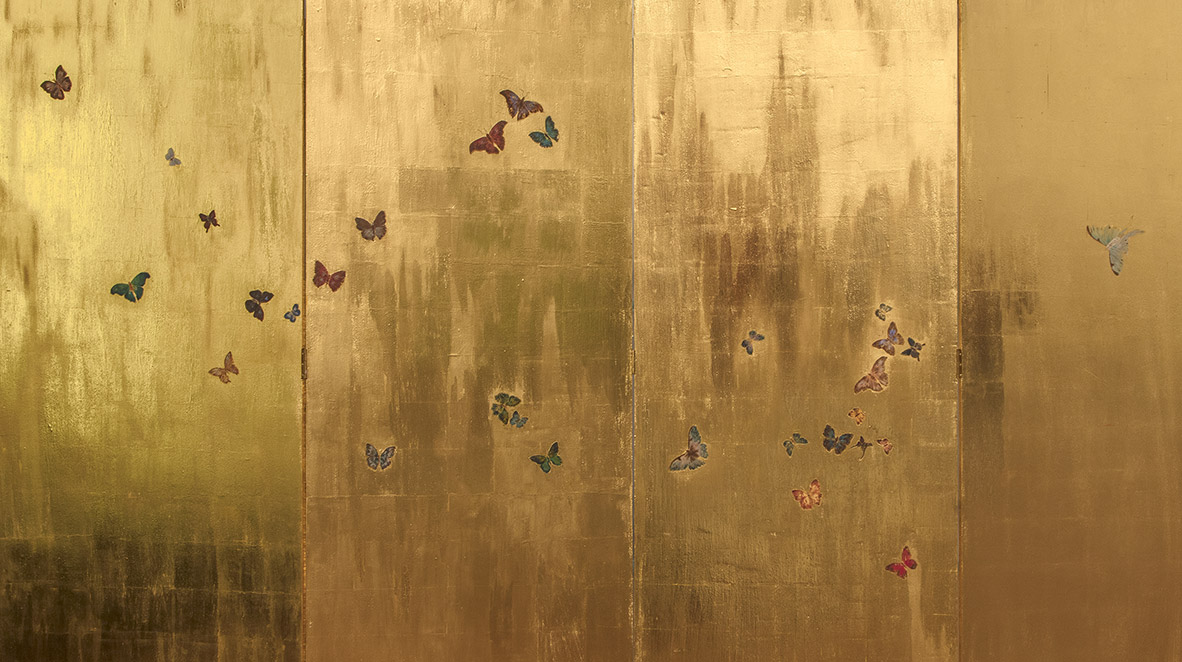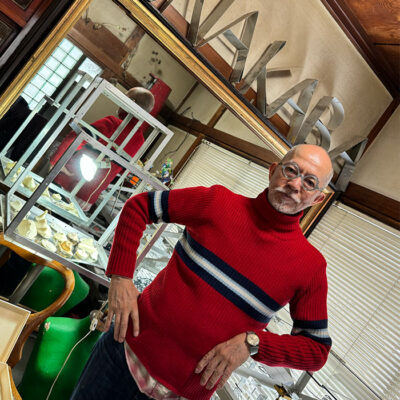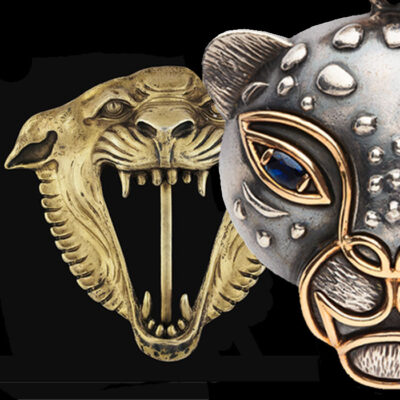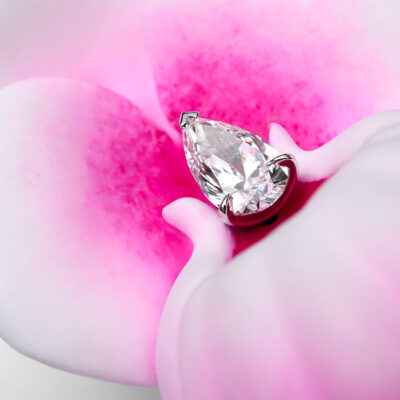Style
09 February 2017
Share
Harumi Klossowska de Rola, artist
Daughter of the painters Balthus and Setsuko Ideta, Harumi traces her singular path in the world of jewelry.
How did you start making jewelry?
One day, after working in fashion at John Galliano’s, I opened my mother’s drawers and they were full of Chinese silk passementerie. Fascinated by the mixtures of colors, I added some colored gemstones. Not until 2008 did I begin designing jewelry in gold, sapphires and diamonds, firstly for Boucheron and now for some years for Chopard.
How would you characterize your style?
Basically, it’s a bestiary with the owl, the lion, the serval considered as a cat by the Egyptians, the cheetah, ibis, eagle and baboon. They are our link with nature and remind us of the importance of respecting it while we are destroying it in a more or less conscious way. Other elements are materials such as bronze that oxidizes and changes its appearance over time. All my objects and jewelry pieces are made by hand which produces irregularities. On the screen, for example, I dented the wood’s surface to produce a wall effect.
Your animals have nothing cute or naive about them …
Their disquieting character comes doubtless from my admiration for Géricault, who always gives them a majestic character in his works. In The Raft of the Medusa, The Monomanes or Horse Devoured by a Lion, life appears in all its tragedy. His animals are fiery, wild and so alive despite their suffering and their frightened looks … Beauty is stronger than ugliness.
Japanese culture has an enormous influence on your work.
This Japanese notion of wabi-sabi, this beauty that seems imperfect to man but perfect according to the criteria of nature is very present in my work. It comes from my mother, who was born in a family of samurai who followed Shinto rites resembling animist religions. She always taught me not to be too brutal with things that have a soul, we must thank them for the service they give us and if they are broken, try to repair them with gold leaf. I love the story by Kawai-san, where in his book We Do Not Work Alone, a man buys a vase to give to a friend. But as he finds it too new and too perfect, he takes a brush, dips it in golden lacquer and draws a twisting line on the surface.
Is your approach that of a painter, a sculptor or a goldsmith?
My approach is more general. Sculpture, this sensual work with clay has helped me a lot for working on the miniatures in jewel. My jewelry pieces have become more personal as I make the models myself to be sure they’re well interpreted by the artisan, and that I now know how to correct. I also know now the limits of what is possible or not. I keep more distance from the jewelry than I do from the sculpture.
Can we talk about some jewelry?
The skull pendant refers to the Feast of the Dead in Mexico. Death is not associated with anything negative, as in the West where one is afraid of death. One wants to flee from it and not accept it. For me, growing up between Shintoism and Catholicism, death is not an end in itself because it may be followed by reincarnation. I have here tried to give it the festive aspect of the Mexican skulls by replacing the human skull with an eagle’s adorned with flowers in turquoise and coral. For the skull pendant of a marmoset monkey, closer to a human’s, I’ve made reference to Christian crosses.
Your parents are famous artists. What influence did they have on your work?
My father got up very early in the morning, ate breakfast and locked himself up in his studio until 5pm. Tea time was a very important moment when we met and talked about each other’s activities. He would speak to my mother about the difficulties he’d encountered in his work, the colors, and his inspirations such as the Italian frescoes by Masaccio and Piero della Francesca, and Chinese or Japanese painters. I grew up with these conversations to which I did not always pay attention but which unconsciously crop up in my work.


